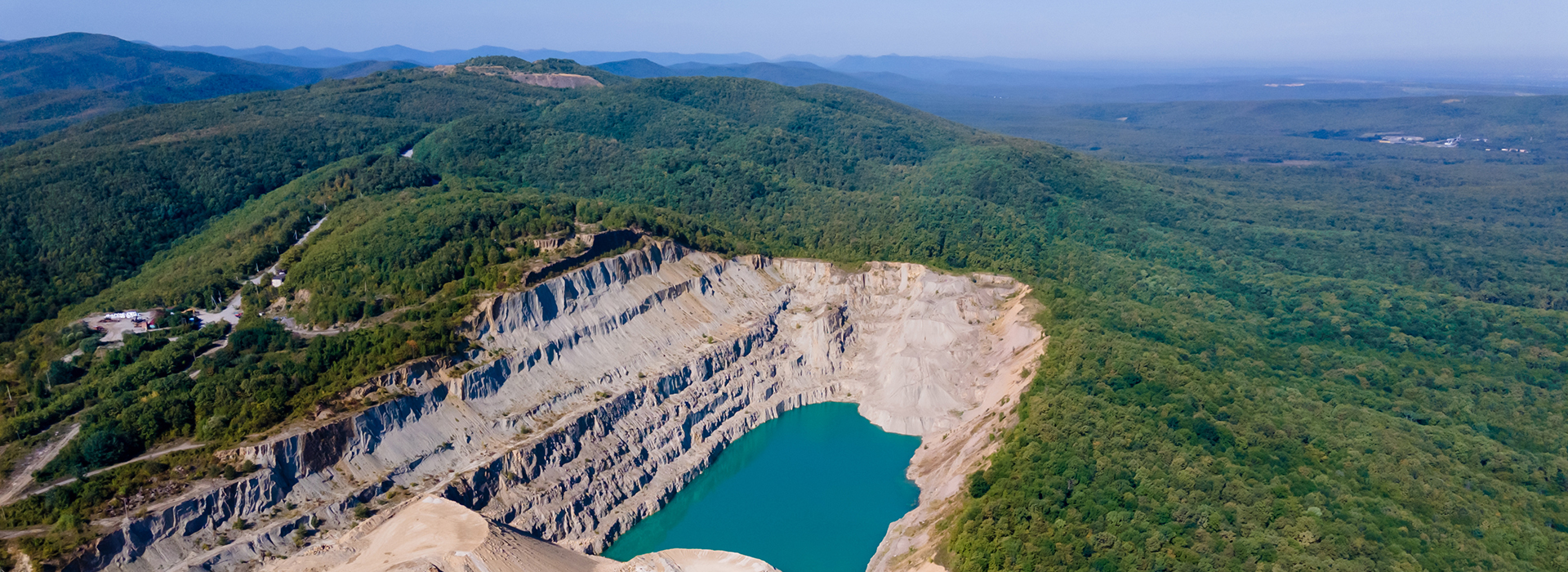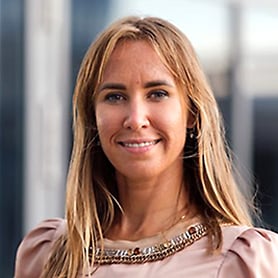Anna Poberezhna: Reimagining sustainable value chains
Anna Poberezhna, country chair, UK, for Sustainable Mining, and founder of ClearHub, which reimagines resources and infrastructure, grew up understanding that a combination of good governance, sound finance and responsible business models are at the heart of sustainable development powered by talent. In 2016, Anna became the first Ukrainian woman to be recognised by the UK Government for her exceptional digital talent. She talks to dss+ about how hi tech sustainable value chain hubs are the future and why a mix of hard and soft skills can help unite sustainability ambitions.


Anna Poberezhna
Founder of ClearHub, country chair, UK, for G100: Mission Million Sustainable Mining and Women in Mining UK contributor
Q.
You have experience in the mining and construction industries. In terms of sustainability issues, where do you see the synergies?
I was raised in a family of economists in the construction and credit finance industries, so I grew up with an organic appreciation of value-add creation as a key element for economic development. While mining also relies on the land, it’s about over extracting value rather than creating it. Whereas the ultimate goal for construction is to build long-term value whilst ensuring balanced trade-offs and offsets. This involves lifecycle driven planning and development of multi-purpose assets as mixed-purpose sites, such as shopping malls and eco-industrial parks, that can be continuously upgraded and repurposed over time where applicable. I’ve grown up to understand good governance, sound finance and responsible business models where sustainability is the natural outcome of synergies.
Q.
How did your journey progress?
My journey included working in more than five industries over the last seven years. These industries and roles have included strategic branding and business transformation, construction, water governance, technology, supply chain management and finance, mining and finally now in hi-tech ecosystem development.
At the beginning of my sustainability journey, I was highly aware that any industry, including construction, without strategic planning and progressive portfolio optimisation is vulnerable to systemic long-term and unpredictable events.
In infrastructure or construction, projects built on conflicted, polluted or poorly maintained land not only carry higher risks, but may be uninvestable, heavily discounted or depreciate faster over time unless necessary measures are taken. So, to remain competitive and effective, any asset development and management requires a practical, holistic and forward looking approach with the ability to monitor and measure progress against set goals and outcomes with possible adjustments.
All in all, I’ve used my early influences to propel me into areas where I can flex my knowledge and develop sustainability skills.
"Every industry, mining included, starts with good governance. Any business innovation will fail unless it is addressed systemically."
– Anna Poberezhna, Founder of ClearHub, country chair, UK, for G100: Mission Million Sustainable Mining and Women in Mining UK contributor
Q.
What do you see as essential to developing sustainability in the mining sector and how is this playing out?
Every industry, mining included, starts with good governance. Any business innovation will fail unless it is addressed systemically by considering every angle from a resource, pricing, risk management or safety aspect, beyond required levels of compliance.
In my humble opinion, good governance sits on three practical pillars: culture, communication and collaboration. When it comes to necessary change, the mining industry is not renowned for its speed. Although there are smaller, more nimble players entering the sector who are changing the paradigm with fresh thinking and innovation. These companies still make up a small part of the whole sector, but they come from a cultural mindset driven by science and use technology as a digital enabler to become more innovative. This shift at a strategic, operational and functional level is helping to disrupt the sector and improve sustainable outcomes.
Q.
With ClearHub, you have a more indirect influence on mining and construction through your involvement in sustainable land development. What progress have you made?
We currently have been assessing a pilot project in South Africa where we are exploring strategies for distressed asset redevelopment, optimisation of existing assets and greenfield development. We have started work on distressed asset redevelopment, which is the most challenging from a practical and jurisdiction perspective. It involves repurposing distressed assets through remediation, reclamation and recovery of resources and then repurposing the land to produce other assets.
Then there’s engagement we are exploring with governments at a global level who are looking to develop their sustainability powers. I think if we are to transition into a more sustainable future, then we need a functioning public and private sector partnership. It’s too fragmented right now. But if we reimagine and upgrade governance policies and improve communication on common goals, we have a much better chance of succeeding at company, community, country and global levels.
"Resilience is about reimagining the entire value chain as a connected global network. Each part of the network is a series of regenerative hubs built on good culture, clear communication and robust infrastructure."
– Anna Poberezhna, Founder of ClearHub, country chair, UK, for G100: Mission Million Sustainable Mining and Women in Mining UK contributor
Q.
What do you see as the sticking points to making further progress on sustainable land development and how can they be resolved?
When we see that G20, G7, and the World Trade Organisation (WTO) each have their own agenda, and we add the issues facing the United Nations and the Paris Agreement to the mix, then it’s clear we face a slow and uphill struggle. So we have a plethora of agreements and targets on sustainability that are slowing down progress. We now need to bring simplicity and clarity to the table if we hope to become a more sustainable world.
We currently have 17 important Sustainable Development Goals (SDGs). But in terms of land development, if we focus on SDGs 6, 7,12 and 17 - sustainable water management, clean energy, responsible production and consumption and partnerships - then we have the main ingredients to create a more sustainable land development future. Fundamental to this pragmatic approach is not to overlook human elements of kindness, courtesy and good grace. While some may see these traits as less important, I believe these soft skills can be a powerful force to unite and help shift views to find resolutions on sustainability sticking points.
Q.
Looking ahead, what would be your top drivers to improve sustainability outcomes?
Good governance has to be the number one driver, as it touches every aspect of the value chain. Then there is the need to make value chains more resilient. We already have the example of Saudi Arabia’s efforts to become a global sustainable supply chain superpower and emerging industry hub. This resilience is about reimagining the entire value chain as a connected global network. Each part of the network is a series of regenerative hubs built on good culture, clear communication and robust infrastructure that uses clean technology. If each hub is purpose-driven to create sustainable value, then we have a set of drivers that can make a real difference to sustainability ambitions across various industrial sectors. That’s an exciting prospect.
"We have a plethora of agreements and targets on sustainability that are slowing down progress. We now need to bring simplicity and clarity to the table if we hope to become a more sustainable world."
–Anna Poberezhna, Founder of ClearHub, country chair, UK, for G100: Mission Million Sustainable Mining and Women in Mining UK contributor